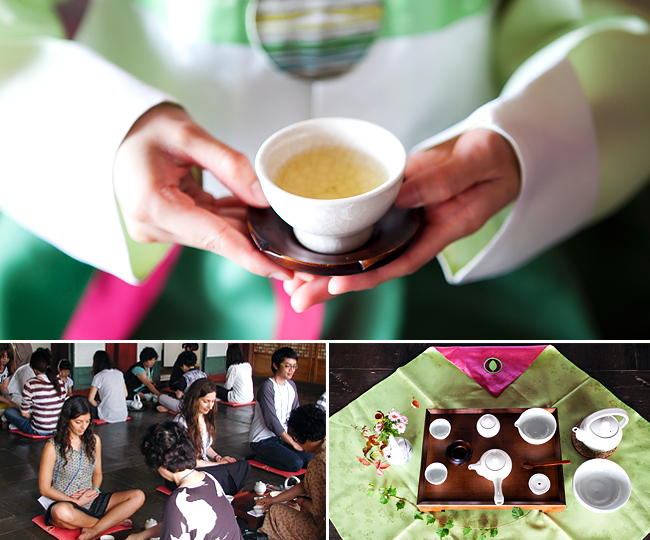| [Korea] Tea Ceremony at Gyeongbokgung’s Jagyeongjeon Hall from May 3 | |
 Photo credit: Korea Cultural Heritage Foundation
A traditional tea ceremony experience will take place at Jagyeongjeon Hall in Gyeongbokgung Palaceevery Saturday and Sunday from May 3 to July 13, 2014.
The Korean tea ceremony or darye is a traditional form of tea ceremony practiced in Korea. TheGyeongbokgung Palace Jagyeongjeon Tea Ceremony Experience offers visitors a chance to learn and experience various aspects of traditional Korean tea culture and etiquette in a royal and historical setting. There will be two sessions available: the first one, to take place at Daecheongmaru, is exclusive to pre-registered applicants; the second one, to take place in front of Jagyeongjeon Hall, is open to visitors on a first-come, first-served basis. Those interested in participating in the tea ceremony experience may make a reservation by sending an email to manpss@chf.or.kr. Special foreigner-only programs will run on May 31, June 15 and July 5, 2014. Participation is free; however the Gyeongbokgung admission fee of 3,000 won must be paid to enter the palace grounds.
More info
<Traditional Tea Ceremony at Jagyeongjeon Hall in Gyeongbokgung Palace> ☞ Venue: Jagyeongjeon Hall in Gyeongbokgung Palace, Jongno-gu, Seoul ☞ Period: May 3 – July 13 / September – October 2014 (Saturdays and Sundays) ※ Detailed schedule for September – October will be announced in August 2014. ☞ Special program for foreigners: Programs for foreigners are available on May 31, June 15 and July 5, 2014 (13:00-14:00). ☞ Time: 1st session (13:00-14:00) / 2nd session (14:00-15:00) ※ Participants for the 1st session should be at Jagyeongjeon Hall on or before 12:30. ※ Applications for the 2nd session will be accepted on-site only from 13:00, on a first-come, first-served basis. ☞ Participation fee: Free ☞ Admission to Gyeongbokgung Palace: Adults 3,000 won / Teens 1,500 won ☞ Reservation: manpss@chf.or.kr (Korean, English, Japanese, Chinese) (Limited to the first 20 applicants only; thus application may end early once spots fill up) ※ Applicants may bring one companion. Participation is limited to one time only. ※ Application [Download] ☞ Closest subway station: Gyeongbokgung Palace Station (Seoul Subway Line 3), Exit 5. ☞ Website: http://www.chf.or.kr (Korean, English) ☞ Inquires: +82-2-730-9924 (Korean, English, Japanese, Chinese) ☞ 1330 Korea Travel Hotline: +82-2-1330 (Korean, English, Japanese, Chinese)
Courtesy of Korea Cultural Heritage Foundation
| |
| Date | 05/07/2014 |
I won't just survive Oh, you will see me thrive Can't write my story I'm beyond the archetype I won't just conform No matter how you shake my core 'Cause my roots, they run deep, oh
Comments
Post a Comment